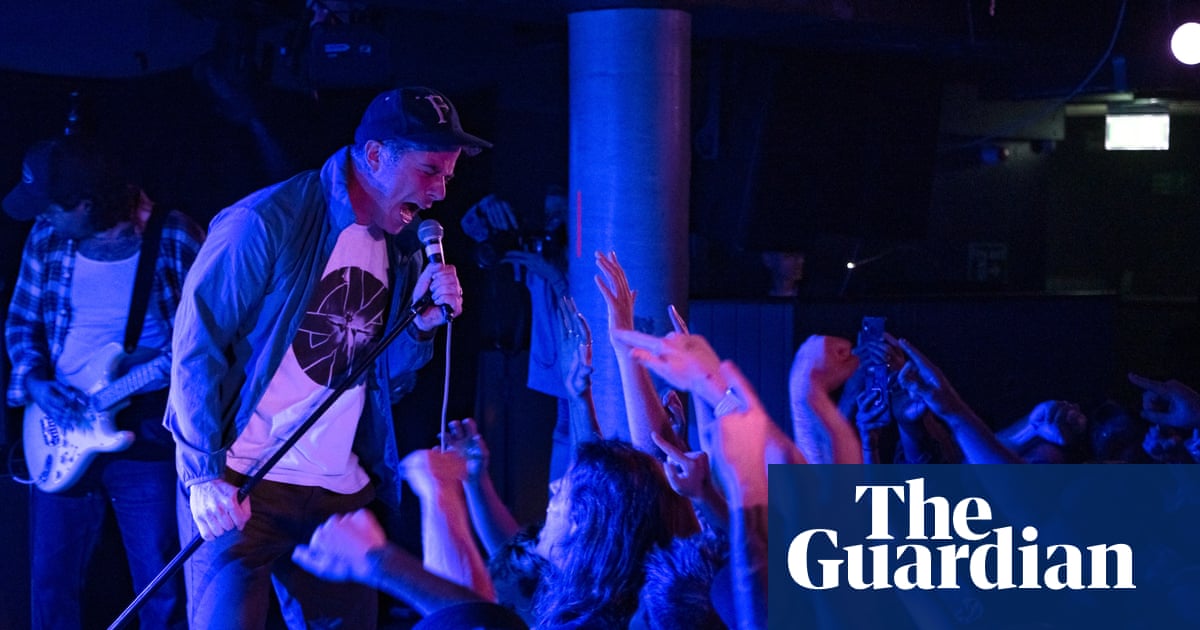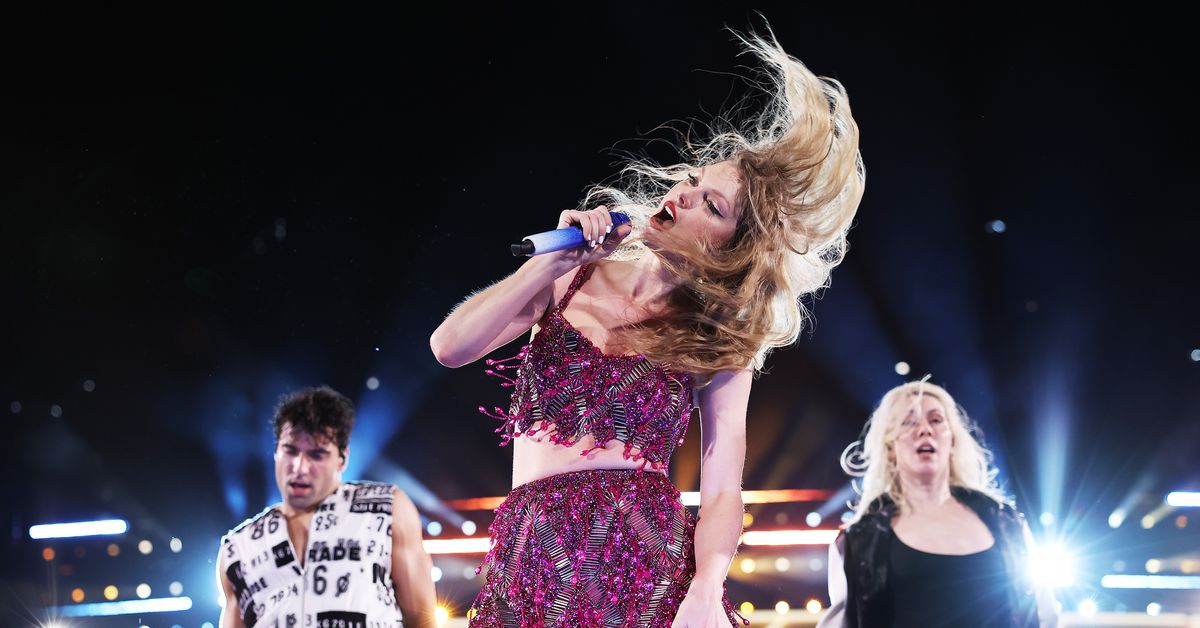
‘It’s no surprise I gravitated to punk’: the military brats who found a home in hardcore
Pat Flynn’s scream of “U-S-M-A!” hangs in the air at the Underworld in Camden, London. A guy in a billowing white T-shirt pes from the stage and is held aloft by the crowd – a typically energetic snapshot from a hardcore show. Except that, on this occasion, it’s not all that typical. With that roar, the Fiddlehead vocalist isn’t preaching positivity or inciting the pit: he’s remembering his father, whose acceptance into the the United States Military Academy almost six decades ago had a profound effect on his life.
Hardcore and the military aren’t obvious bedfellows, but Flynn is among a number of musicians for whom the two are inextricable. He was an army brat – his father studied at USMA, commonly known as West Point, before he served in Vietnam, and taught there afterwards. Later, Flynn bounced between Germany, Connecticut, Arizona and Washington DC with his family before settling in Massachusetts. “It created this misfit thing, moving all the time,” Flynn says, sitting in a coffee shop before the show.
American hardcore grew out of fading punk scenes in the late 70s, bringing regional identities to international prominence. Early New York hardcore was macho and gritty, led by bands such as Cro-Mags and Agnostic Front. In DC, Minor Threat and the Dischord Records stable blended speed with social commentary. Los Angeles bands such as Black Flag and Germs found nihilism in the sunshine.
There were brats in all these scenes. Pivotal east coast hardcore band Bad Brains was fronted by Paul “HR” Hudson, who was born in Liverpool while his father served in the US air force. In San Pedro, California, Mike Watt ventured out from navy housing and found a friend with whom he would redefine DIY punk as a member of Minutemen. “My pop was a machinist’s mate in engine rooms, mainly nuke ones,” Watt says in an email. “The reason I met [bandmate] D Boon was cuz Cali is way closer to Vietnam than Virginia.”

Hardcore can seem like an attractive way of life to people seeking an anchor. The music is an amped-up version of punk that is fast, aggressive and, at times, driven by strict belief systems: straight edge, an offshoot of hardcore, preaches abstinence from drugs and alcohol. The genre is built around cathartic release, and its prioritising of all-ages venues and local scenes has created a culture of tribalism and community.
“I went to five elementary schools, so not a lot of friends,” says Entry vocalist Sara Gregory. The daughter of a marine, Gregory grew up between Virginia, Kentucky and Pennsylvania, where she discovered the hardcore scene in Wilkes-Barre. “When you become involved in hardcore, immediately [you know] where to find friends – I’m gonna go to a show.”
For Wesley Eisold, founder of Boston outfit American Nightmare, hardcore became a respite from the cruelties of high-school life, even when he lived miles away from the scenes he coveted. Eisold frequently relocated thanks to his father’s career as a naval officer; born with one hand, his parents signed him up for football to make friends – a futile pursuit, given that he would often have to quit the team when his family inevitably moved again. Music, though, was a constant.
In Eisold’s junior year of high school, his family moved to Maine, and he fell in with the Boston straight edge scene, which had captivated him even when he was living on a base in Stuttgart. “The popular girl in high school likes you, the popular guy in high school hates you, and you’re into punk, and you have one hand, and it’s just a fucking weird combination,” he says. “You’re like, ‘I can ride this out for a year because I’m gonna bounce anyway.’ But music stays with you. It exists within you.”
“With bands you eventually feel deflated, based on success, or people’s reactions, or what a label is telling you,” he adds. “When I got to that point I had no problem starting over. To me, it was just moving to a new town again where you’re the weird new person – just keep quiet, and do the work. Eventually, you’ll meet the people you need to meet.”

Born in the UK while his engineer father was stationed at an air force station near Ipswich, Bartees Cox Jr – the rising indie-rock musician better known as Bartees Strange – gravitated to hardcore as a teen while living with his family in the “overwhelmingly white and racist” town of Mustang, Oklahoma. “Even though I was the only Black person [at a show], everyone was different,” he says. “I didn’t feel I stood out among people with piercings and tattoos, and the inpidualist nature of the situation.”
But, for a teenager growing up on bases, expressions of inpiduality could only go so far. “You had to be secretive, because your actions would affect your parent’s career,” Eisold says. “I was gothed out, wearing fishnets underneath cut-off shorts and Doc Martens, and I remember being ripped out of a room by my father, saying: ‘You cannot look like this.’”
Nancy Barile promoted shows and managed Philadelphia band Sadistic Exploits in the early 80s. Her father, a second world war marine, instituted a strict, patriarchal system at home. “He would tell people he expected instant obedience, that if he was driving down the highway and said, ‘Dive!’, three kids would go out the window,” she says. “I don’t think it’s a surprise that I gravitated to punk and hardcore.”
At 16, Barile met Patti Smith’s mother at one of the proto-punk legend’s Philly shows and the two became intergenerational pen pals. “When I got my first letter, I was so excited,” she says. “I was reading it when my dad came in. I apparently wasn’t paying enough attention to him. He tore it to pieces. I was crushed. I still have it, all taped up.”

Barile’s participation in hardcore was a form of rebellion, but her father’s strictures helped her understand how to bring order to the DIY shows she put on. “A marine principle is you ensure the task is understood, supervised and accomplished,” she says. “Our first fest, we didn’t know what we were doing, so these principles ruled. Employ your command in accordance with its capabilities – figure out who has the skillset to do what you need.”
Flynn partly responded to hardcore for a similar reason: the punks he booked for shows as a teenager kept ghosting him, but the hardcore bands always turned up. “As a kid, you want to rebel, but you don’t want to self-destruct,” he says. “I knew I was getting into something that wasn’t in disarray.”
Cox Jr sees his later movements, jumping between jobs and cities before becoming a touring musician, as a byproduct of unsettled geography: “[Brats] get happy feet – they don’t like staying anywhere too long,” he says. Eisold, Flynn and Gregory agree. “I’ve been in LA for seven years,” Gregory says. “It’s the longest I’ve lived anywhere my entire life.”
When confronted with its hallmarks – the tangle of raised fists, people launching off stages – hardcore seems like an expression of chaos. But beneath that are values that speak to the lived experience of these brats: hard-won independence and self-expression, a DIY work ethic, and a longing to feel like you belong. “Here I am now, still doing it,” Gregory says. “I found the place I wanted to be.”










































































